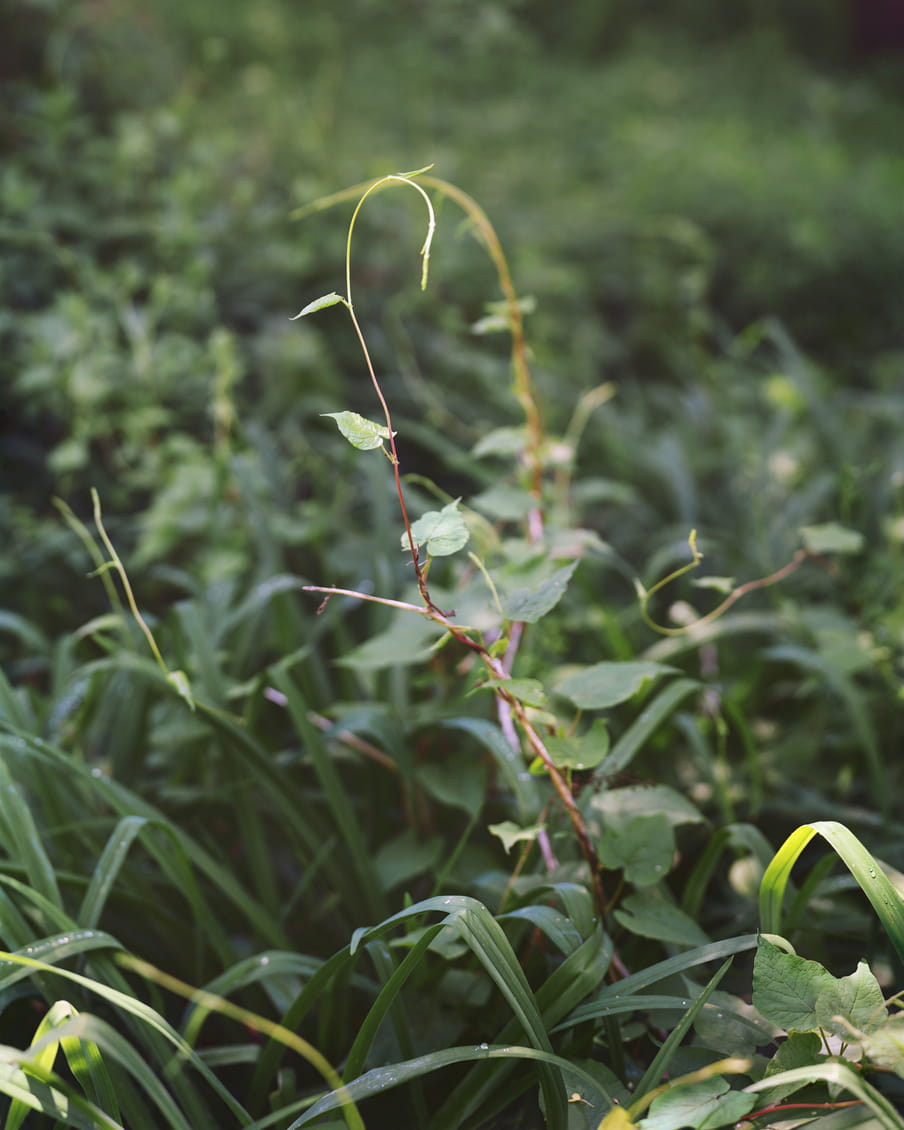Trigger warning: the material below contains a discussion on suicide. Please close this page if you find this topic disturbing. If you need help, or someone you know does, please know that you don’t have to suffer in silence. Please seek professional help.
A 61-year-old man from Pune, India, made a drawing of the coronavirus based on what he saw in media reports. He wrote a note describing how tired he was with the situation. Then he killed himself.
A 75-year-old man from the same city wrote two words in a note – "coronavirus fear" – before ending his life.
A 22-year-old medical student treating patients with Covid-19 was found dead in Chennai, India. The police believe it was a suicide.
In Milan, Italy, a 34-year-old nurse who had tested positive killed herself, fearful that she might have passed her infection on to others.
In Hochheim near Frankfurt, Germany, a politician in charge of the finance portfolio of the country’s Hesse region ended his life. He is said to have been in despair over the economic fallout of the pandemic.
This is a list that no one should have to compile. But there’s no running away from it. The coronavirus pandemic has unleashed a wave of completely preventable deaths, the impacts of which will reverberate long after the virus is gone.

Across the world, suicides related to the pandemic present a massive, underappreciated threat. As Adriana Panayi writes in the Scientific American: while global attention is largely focusing on the active physical treatment of patients, suicide risk is being overlooked.
In my country, India, suicides were already the number one killer of women in the 15-39 age group and the number two killer of men of the same group. The pandemic is making things worse at a breathtaking pace.
As of 29 April, according to data compiled by the Pune-based Centre for Mental Health Law and Policy (CMHLP), India had recorded 140 suicides and another 21 suicide attempts directly related to Covid-19, attributed to a range of reasons such as the fear of catching the virus, stigma, and alcohol withdrawal. And those numbers are based only on whatever is reported in the country’s English-language media. Many suicides don’t get reported because of stigma, and there isn’t much reliable data available from India’s teeming local-language press, meaning that the actual number could be much higher.
After the lockdown, when the full toll of the economic crisis confronts us, this could assume even more terrifying proportions.
Today, I want to talk to you about what we – you and I – can do to help.
First, repeat after me: suicides aren’t just a health sector issue
I have had suicides in my family. Personally too, I have experienced suicidal thoughts for a large part of my adult life. I don’t like using the word "normal" to describe this phenomenon, but for the lack of a better expression, let’s just say that the impulse to explore our own mortality visits more people around us than we will ever know.
And that’s in "normal" times, when the world doesn’t seem to be collapsing on itself. When everything appears like a dumpster fire, like it does now, that impulse can become far more consuming for far more people.


I use the word "impulse" very consciously. As CMHLP director Soumitra Pathare stressed in a recent podcast on which we both appeared, all suicides are not the result of preexisting mental illness, although that’s a belief that’s often hardcoded culturally.
Suicides are a complex, intersectoral and intersectional issue. They sit flush at the meeting point of politics, economics, and identity. Broad-brushing all suicides as the product of mental illness is just society’s way of denying responsibility for deep, systemic stressors: inequality, discrimination, injustice.
For instance, research in the US state of Oregon found that the combination of disability and minority sexual orientation could exacerbate the risk of suicide.
"Globally, suicide rates have often fallen when living conditions have improved. And the reverse is also true," writes Kirsten Weir in the Monitor on Psychology. "Princeton University economists Anne Case, PhD, and Angus Deaton, PhD, have shown that deaths from suicide, drugs and alcohol have risen steeply among white, middle-aged Americans since 2000. They argue these ‘deaths of despair’ are linked to a deterioration of economic and social wellbeing among the white working class."
In a period like the current one, with a virus killing people by the thousands and destroying livelihoods with a fury not seen since the Great Depression, it isn’t hard to imagine the frightening psychosocial pressures that may drive a person to despair.
Repeat after me: suicides are not just a health sector concern. We cannot limit our search for solutions within the health sector.
Three things we can do right now to help
One of the biggest impediments in suicide prevention, especially in a country like India that has a tradition of fatalistic thinking, is the mindset that nothing can be done to stop someone who’s decided to kill themselves. Or the belief that some people are just inherently wired for "suicidal behaviour".
This is a fallacy, says Pathare. A lot can be done – and indeed, is being done, as the examples below will show – both at the community level and at the government level, with powerful outcomes.
Suicide prevention is a decades-old area of academic research and activism. Here are just three things distilled from all that wisdom that are within the reach of each one of us.
(1) Demand that policymakers look beyond the health sector
Many suicides – such as students killing themselves after poor exam results – are caused by immediate triggers. Preventing them requires rethinking musty old institutions, such as the "academic session".
In the Indian state of Tamil Nadu, passionate lobbying led to the provision of a supplementary exam that would give students another chance to redeem themselves. Following this, student suicides in the state reportedly almost halved between 2004 and 2014.

In other demographics – such as farmers – suicides are often the result of economic deprivation and debt. One way to tackle farmer suicides could be simply cutting off access to pesticides – a frequently used agent. Though this is an evolving field of study, Sri Lanka is an often-cited example of a country that saw a sharp fall in suicides coinciding with a ban on certain pesticides.
In the Indian state of Gujarat, Pathare’s team runs a suicide-prevention project which consists of installing lockers to safely store away pesticides. I saw some of them in a village during a field trip earlier this year.
Of course, the most sustainable way to end farmer distress is to make sure they are economically protected.
Each of these solutions I am hinting at requires civil society’s active participation in shaping policy. In India, we saw the results this approach can yield just before the 2019 national elections. In the face of determined lobbying organised under an umbrella campaign called Bridge the Care Gap, two major political parties included mental health in their poll manifestos. This was almost unthinkable for India, a country where health – let alone mental health – was hardly ever a poll issue.
In a story I wrote for the newspaper where I then used to work, I speculated that one of the reasons this subject appealed to the two parties could’ve been that the states where they had their stronghold had a major suicide problem.
We must not shy away from using political means to take on something that seems as intensely personal as suicides
In other words: a potential vote bank existed around suicides, in the form of the friends and families of the deceased.
Crude as that might sound, we must not shy away from using political means to take on something that seems as intensely personal as suicides. Suicides are preventable – if we focus our efforts in the right place. Push politicians and policymakers in your cities and countries to look beyond the health sector. Ask what they are planning to do to restore jobs after the pandemic. Ask what their stand is on universal income, and urge them to work towards some form of it. Pick up the phone and call your elected representatives. Start an online signature campaign. Demand action.
(2) Bust these five myths about suicide wherever you can
The National Alliance for Mental Illness lists five common myths about suicide:
- Suicide only affects individuals with a mental health condition.
- Once an individual is suicidal, he or she will always remain suicidal.
- Most suicides happen suddenly without warning.
- People who die by suicide are selfish and take the easy way out.
- Talking about suicide will lead to and encourage suicide.
Take down these myths wherever and whenever you can. Form civil society groups to spread awareness. Get on social media. Make memes. Use your WhatsApp family groups for good. Don’t wait for "influencers" to do the job. Start by educating one person, then another, in your own circle of influence. Start today.
(3) Mind your own language, and call out the media when they don’t mind theirs
In the mental health and suicide prevention movements, sensitive and informed use of language plays a critical role. Stigma, of which poor language is a key component, can be a real killer.

Through the course of the pandemic, criminalising and dehumanising language such as "Covid suspects" and "super spreaders" has been used mindlessly in the media and social media. Equally, phrases like “corona warriors” have been thrust upon frontline workers, almost with the entendre that they are expected to die in the line of duty.
This has to stop. We have to banish this kind of language from our own vocabularies to begin with.
Then comes the media, which can exert a dramatic impact on the suicide landscape. This was immortalised by the famous “Vienna subway suicides” case from the 1980s, where improving media literacy on suicides led to a pronounced fall in their number.
Suicide isn’t the ‘next’ big crisis that some commentators have suggested. It has always lurked here
So, whenever you see a media report sensationalising a suicide by describing the method in graphic detail, romanticising or normalising suicide as an "escape", or using shocking illustrations (noose, knives, pool of blood), call it out. Refer the writer to extensive guidelines that already exist on sensitive suicide reporting, such as this one by the World Health Organization.
Remind them not to say "committed suicide", because suicide isn’t a crime that one "commits". And also because we don’t say "committed a heart attack". Ask them to avoid saying "failed suicide attempt", because suicide isn’t a game that one can win. (In case you are wondering, I didn’t provide hyperlinks to the news stories on the suicides at the beginning of this piece because some of them violate these principles.)

Getting gigantic news organisations to pay attention and change their language might seem like a fool’s errand - but it isn’t. Even a couple of years ago, persuading Indian media companies to reform their language was a lonely pursuit carried out by a handful of advocates. Now, new voices join and strengthen the chorus on a daily basis, stirring newsrooms into action.
Like the global mental health crisis, suicide isn’t the "next" big crisis as some commentators on Covid-19 have suggested. It has always lurked right here in our midst. The pandemic’s global sweep has only coalesced our attention around it. The time to act is now.
If you have been affected by any of the issues in this article, this website provides contact details of free helplines around the world.
 About the images
The large-format photographs of Another Way of Looking at Love by Janelle Lynch are composed of thin branches, fine stems, and other stalks that create sets of delicate connections. These new networks created by the hand of the photographer link together elements of the same species – Japanese barberry or burdock, for instance – or combine multiple species – such as golden rod and pokeweed or burning bush and pine trees – that would have cohabited alongside each other, throughout the seasons, without any intimate entanglements. The formation of these weavings gently opens up spaces for alternate realities to be envisioned and suggests solace in the idea that we are organically and spiritually connected to nature and to one another. Another Way of Looking at Love was published by Radius Books in 2018. (Myrabelle Charlebois, image editor).
About the images
The large-format photographs of Another Way of Looking at Love by Janelle Lynch are composed of thin branches, fine stems, and other stalks that create sets of delicate connections. These new networks created by the hand of the photographer link together elements of the same species – Japanese barberry or burdock, for instance – or combine multiple species – such as golden rod and pokeweed or burning bush and pine trees – that would have cohabited alongside each other, throughout the seasons, without any intimate entanglements. The formation of these weavings gently opens up spaces for alternate realities to be envisioned and suggests solace in the idea that we are organically and spiritually connected to nature and to one another. Another Way of Looking at Love was published by Radius Books in 2018. (Myrabelle Charlebois, image editor).
Dig deeper
 The true cost of caring: who helps the person who helps others?
What’s the true cost of caring? A few months ago, I considered volunteering for a suicide hotline, so I wanted to know what I’d be getting myself into. I found that empathy can be a blessing and a curse. But with a support network and self-care, first responders can combat compassion fatigue.
The true cost of caring: who helps the person who helps others?
What’s the true cost of caring? A few months ago, I considered volunteering for a suicide hotline, so I wanted to know what I’d be getting myself into. I found that empathy can be a blessing and a curse. But with a support network and self-care, first responders can combat compassion fatigue.


